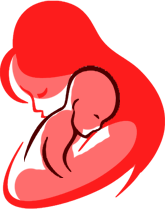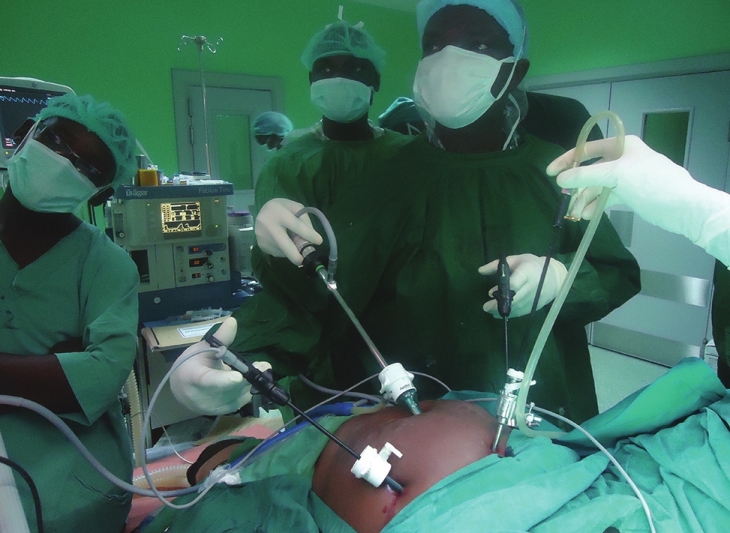

Total Laparoscopic Hysterectomy (TLH)
Total Laparoscopic Hysterectomy (TLH) is a safe and reproducible technique. However, its use has been limited so far. The most quoted criticisms to this surgery are technical difficulties and concerns about urinary complications. In the different publications that have demonstrated the feasibility and safety of the procedure, a step by step technique has always been remarked. It is a very complete lecture that addresses all aspects to achieve good results when performing TLH. Not only Dr. Osorio outlines the 10 key steps of this surgery, but she also presents the preoperative set-up, the instruments required, and the specific considerations related to the ureter and to the management of difficult cases.
Why it's done ?
Vaginal hysterectomy treats various gynecological problems, including:
. Fibroids. Many hysterectomies are done to permanently treat these benign tumors in your uterus that can cause persistent bleeding, anemia, pelvic pain, pain during intercourse and bladder pressure. For large fibroids, you might need surgery that removes your uterus through an incision in your lower abdomen (abdominal hysterectomy).
. Endometriosis. This occurs when the tissue lining your uterus (endometrium) grows outside the uterus, involving the ovaries, fallopian tubes or other organs. Most women with endometriosis have a laparoscopic or robotic hysterectomy or abdominal hysterectomy, but sometimes a vaginal hysterectomy is possible.
. Adenomyosis. This occurs when the tissue that normally lines the uterus grows into the uterine wall. An enlarged uterus and painful, heavy periods result.
. Gynecological cancer. If you have cancer of the uterus, cervix, endometrium or ovaries, or precancerous changes, your doctor might recommend a hysterectomy. Most often, treatment for ovarian cancer involves an abdominal hysterectomy, but sometimes vaginal hysterectomy is appropriate for women with cervical or endometrial cancer.
. Uterine prolapse. When pelvic supporting tissues and ligaments weaken or stretch out, the uterus can sag into the vagina, causing urine leakage, pelvic pressure or difficulty with bowel movements. Removing the uterus and repairing supportive tissues might relieve those symptoms.
. Abnormal uterine bleeding. When medication or a less invasive surgical procedure doesn't control irregular, heavy or very long periods, hysterectomy may be needed.
. Chronic pelvic pain. If your pain is clearly caused by a uterine condition, hysterectomy might help, but only as a last resort. Chronic pelvic pain can have several causes, so an accurate diagnosis of the cause is critical before having a hysterectomy.
For most of these conditions - with the possible exception of cancer - hysterectomy is just one of several treatment options. You might not need to consider hysterectomy if medications or less invasive gynecological procedures manage your symptoms.
You cannot become pregnant after a hysterectomy. If you're not sure that you're ready to give up your fertility, explore other treatments.
Although vaginal hysterectomy is generally safe, any surgery has risks. Risks of vaginal hysterectomy include:
. Heavy bleeding
. Blood clots in the legs or lungs
. Infection
. Damage to surrounding organs
. Adverse reaction to anesthetic
Severe endometriosis or scar tissue (pelvic adhesions) might force your surgeon to switch from vaginal hysterectomy to laparoscopic or abdominal hysterectomy during the surgery.
Procedure:
After sedation from general anesthesia is achieved; the doctor will make a small incision at or near your belly button, depending on the size of your uterus, for the laparoscope to be passed through and 2-4 additional incisions in your lower abdomen to insert necessary surgical instruments. Carbon dioxide gas will be used to inflate the abdomen to allow the doctor to insert the laparoscope and visualize the abdomen/pelvis. Through the guidance of the laparoscope the uterus will be freed from ligaments and surrounding blood vessels. An incision will be made at the top of the vagina to release the uterus and cervix; the vaginal incision will then be closed with dissolvable sutures and necessary blood vessels will be cauterized to prevent bleeding. The uterus is then removed through the vagina. If the uterus is large then an instrument called a Morcellator may be used to divide the uterus into small sections that are then removed from the body through one of the incisions. The procedure is then completed by suturing the top of the vagina, the necessary layers of the abdomen and skin, and then placing dressings over the incision sites. Diagnosis: The most common reasons to have a TLH are: Fibroids- non cancerous tumors that cause pelvic pain, heavy and abnormal uterine bleeding, painful intercourse, or other symptoms. Endometriosis- growth of uterine lining in other parts of the abdomen or uterine muscle (adenomyosis) that causes pelvic pain. Uterine prolapse-the downward movement of the uterus into the vagina. TLH is also done for treatment of pre-cancerous lesions and gynecological cancers. Your physician will discuss your diagnosis with you prior to surgery and it will be documented in your medical record.